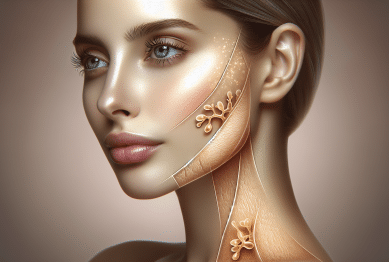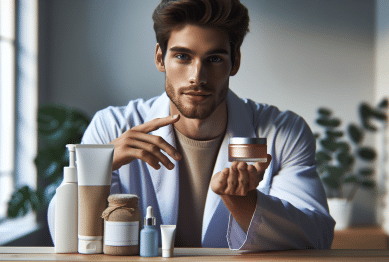Unlock the secrets of radiant skin with this guide to glow-boosting skincare ingredients. Explore surprising compounds, their nourishing benefits, and learn how they transform wellness routines for brighter, healthier-looking skin.
Unveiling the Power of Modern Skincare Ingredients
Skincare has moved beyond simple moisturizers. These days, consumers look for solutions that support overall skin wellness as much as beauty. New compounds like niacinamide, bakuchiol, and peptides are becoming popular due to their potential to improve skin texture and vibrancy. Glowing, even-toned complexions often come from a thoughtful combination of traditional and emerging skincare ingredients. Understanding what each element offers, and how it interacts with your skin type, makes a real difference. Glow-boosting skincare is as much about science as it is about appearance, with supporting evidence from leading dermatological researchers backing up their effectiveness (https://www.aad.org/public/everyday-care/skin-care-secrets/routine).
What sets these modern skincare ingredients apart? Many are derived from new research into cellular regeneration and gentle exfoliation. Instead of relying solely on harsh acids, advances now highlight how certain peptides stimulate collagen or how ceramides restore the moisture barrier. With daily exposure to environmental stressors like sun, pollution, and screen light, the demand for solutions that go beyond surface-level fixes is higher. These compounds address both the immediate appearance and deeper resilience of skin (https://www.ncbi.nlm.nih.gov/pmc/articles/PMC6715783/).
Embracing these insights could make all the difference for your wellness routine. As knowledge grows, more consumers are curious about integrating clinical-grade actives with holistic approaches — from antioxidant-rich serums to microbiome-friendly formulations. Each ingredient serves a role: brightening, hydrating, soothing, or protecting against daily damage. Experts recommend researching each active’s benefits and possible side effects to create a regimen that’s both effective and sustainable (https://www.health.harvard.edu/staying-healthy/the-science-and-art-of-skincare).
The Clinical Benefits of Niacinamide and Peptides
Among the most significant breakthroughs in skincare, niacinamide and peptides stand out. Niacinamide, also known as vitamin B3, is favored for its ability to help reduce hyperpigmentation and promote smoother skin. Many dermatological studies support its use for minimizing inflammation and boosting hydration, making it ideal for sensitive skin types. Paired with peptides, which encourage collagen production, the combination has strong evidence for long-term skin resilience. Using these glow-boosting ingredients can support skin repair after sun exposure and daily stress (https://www.ncbi.nlm.nih.gov/pmc/articles/PMC2921764/).
Peptides, which are small chains of amino acids, have risen in popularity thanks to their role in keeping the skin firm and elastic. These compounds send signals to your skin cells, encouraging them to repair and renew. This targeted rejuvenation can improve visible signs of aging and dullness. While topical application can produce visible improvement, effects build up gradually with consistent use and proper formulation. Selecting peptides or blends with clinical backing is essential to reaching the desired results (https://www.ncbi.nlm.nih.gov/pmc/articles/PMC3583886/).
Combining niacinamide and peptides brings adaptive benefits — both ingredients address redness, texture, and elasticity but do so through different biological pathways. This synergy means skin can look brighter and perform its barrier function more effectively. Routine use, as part of an evidence-based regimen, creates the foundation for glowing, confident skin. As with all potent skincare actives, patch testing and incremental introduction is wise to minimize irritation or reaction (https://www.mountsinai.org/health-library/selfcare/vitamin-b3-niacinamide).
Natural Compounds: Bakuchiol, Squalane, and Centella Asiatica
Consumers are increasingly turning to natural skincare options that deliver proven wellness benefits without harsh side effects. Bakuchiol, a plant-derived ingredient, mimics the smoothing effects of retinol while being less likely to cause irritation. Studies show bakuchiol supports cell turnover, reducing the look of fine lines and uneven tone. This makes it a popular choice for those with sensitive or redness-prone skin seeking a natural glow-boosting treatment (https://www.ncbi.nlm.nih.gov/pmc/articles/PMC6052685/).
Squalane, another trending ingredient, is prized for its deep moisturizing action. Unlike some heavier oils, squalane closely matches the skin’s natural sebum, so it absorbs quickly and doesn’t clog pores. It’s sourced from olives or sugarcane, providing a light yet powerful boost to skin softness and flexibility. Regular use helps restore the lipid barrier, essential for keeping skin comfortable and hydrated throughout changing seasons (https://www.ncbi.nlm.nih.gov/pmc/articles/PMC6771271/).
Centella Asiatica rounds out this trio of botanical actives. Its soothing properties are famed for reducing visible redness while supporting skin healing. Antioxidant compounds in Centella further help to guard against daily stressors — both environmental and internal. When incorporated into a wellness-focused skincare regimen, these natural ingredients work together to create noticeable, balanced luminosity while honoring sensitive skin needs (https://pubmed.ncbi.nlm.nih.gov/20877670/).
How Antioxidants and Barrier Repair Boost Radiance
Radiant skin isn’t just about what is applied on top — it’s also about protection from daily harm. Antioxidants like vitamin C and E are fundamental for defending against oxidative damage. Vitamin C, in particular, brightens dull complexions and supports collagen synthesis. Layering antioxidant serums under moisturizer primes skin to handle exposure to sunlight and pollution, reducing visible signs of fatigue or aging. Research indicates that a balanced antioxidant routine can help skin retain its youthful glow for longer (https://www.ncbi.nlm.nih.gov/pmc/articles/PMC6225916/).
The integrity of the skin barrier is crucial for overall wellness. When the barrier is compromised, skin loses hydration faster and becomes vulnerable to outside irritants. Ingredients like ceramides, cholesterol, and fatty acids play an essential role in fortifying the moisture layer. These not only prevent dryness and flakiness but also support the natural restorative processes that keep skin looking and feeling elastic. Strong, resilient skin radiates health — and it starts with repairing the foundation every day (https://www.ncbi.nlm.nih.gov/pmc/articles/PMC5843351/).
Combining antioxidants with barrier-repairing ingredients can amplify results. Many people notice differences in both texture and tone after several weeks of use. By acting on multiple levels, these ingredients defend, hydrate, and reinforce — creating the kind of healthy skin that glows with minimal makeup. For those with extra-sensitive concerns or underlying conditions, it’s always wise to check ingredient lists and consider professional advice for optimal benefits (https://www.ncbi.nlm.nih.gov/pmc/articles/PMC4539257/).
Layering, Consistency, and Lifestyle for Sustainable Glow
How products are layered makes a significant impact on their effectiveness. Experts recommend applying lighter, water-based serums first, followed by thicker creams or oils to seal in active ingredients. This approach ensures each element can penetrate and support skin at its healthiest. Glow-boosting regimens are most successful when tailored to individual lifestyles — considering not just products but also sleep, hydration, and daily habits. Consistency is the key to seeing sustained improvements (https://www.aad.org/public/everyday-care/skin-care-basics/care).
Consistency also means listening to your skin. Tracking changes after introducing new ingredients helps identify products that nurture, rather than irritate. Keeping routines simple — and gradually adding one active at a time — often results in more noticeable glow-boosting effects. Moreover, lifestyle choices such as balanced nutrition, stress management, and regular exercise all contribute to the visible health of skin. A holistic mindset supports the best outcomes in both beauty and wellness (https://www.health.harvard.edu/newsletter_article/skin-care-basics).
Long-term success lies in patience and self-care. Radiance does not happen overnight, but routine attention pays off. Clear, bright complexions shine most for those who prioritize their wellness inside and out. By building your approach step by step, you’ll discover which ingredients and habits cultivate that natural, healthy glow — unlocking more confidence, every day. Explore more ways to personalize these regimens by consulting credible sources or a qualified dermatologist (https://www.mayoclinic.org/healthy-lifestyle/adult-health/in-depth/skin-care/art-20048237).
Future Trends: The Rise of Personalized Skincare
Personalization is transforming wellness and beauty, moving beyond a one-size-fits-all mindset. Advanced diagnostics and ingredient-matching algorithms are helping people tailor routines that reflect their specific needs and goals. These innovations draw on both genetic markers and lifestyle factors to recommend compounds that maximize radiance while minimizing the risk of irritation or waste. As this technology advances, personalized glow-boosting skincare promises to become more accessible and effective (https://www.ncbi.nlm.nih.gov/pmc/articles/PMC6022689/).
Ingredient transparency is likewise reshaping consumer habits. More people are demanding detailed, evidence-backed explanations for what goes into their skincare — and why. Tracking reactions, results, and preferences online is fueling the development of smarter, truly individualized formulas. This data-driven mindset empowers healthier habits and sets a new standard for accountability in the industry. It’s an exciting time for anyone invested in both beauty and wellness.
In the end, the ultimate goal remains: radiant, well-balanced skin that reflects inner vitality. Whether adopting time-tested or newly discovered actives, or benefiting from tailored technologies, ongoing education is crucial. Staying curious and informed by reliable sources ensures every glow-boosting addition to your routine serves your unique wellness journey. Learn more by exploring research and insights from respected dermatology resources (https://www.dermatologytimes.com/view/ai-skincare-personalization).
References
1. American Academy of Dermatology. (n.d.). Skin care secrets. Retrieved from https://www.aad.org/public/everyday-care/skin-care-secrets/routine
2. Harvard Health Publishing. (n.d.). The science and art of skincare. Retrieved from https://www.health.harvard.edu/staying-healthy/the-science-and-art-of-skincare
3. Mount Sinai. (n.d.). Vitamin B3 (Niacinamide). Retrieved from https://www.mountsinai.org/health-library/selfcare/vitamin-b3-niacinamide
4. Mayo Clinic. (n.d.). Skin care: 5 tips for healthy skin. Retrieved from https://www.mayoclinic.org/healthy-lifestyle/adult-health/in-depth/skin-care/art-20048237
5. National Institutes of Health. (n.d.). Natural ingredients in skincare. Retrieved from https://www.ncbi.nlm.nih.gov/pmc/articles/PMC6052685/
6. Dermatology Times. (n.d.). AI and skincare personalization. Retrieved from https://www.dermatologytimes.com/view/ai-skincare-personalization









